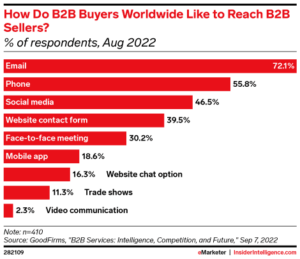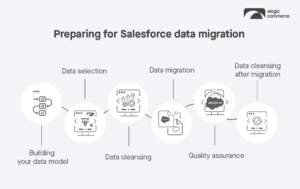Magento vs Shopify: Which Ecommerce Platform is Right for your Retail Business?
So you’ve decided to launch an online store; now you’re facing the issue of where to do it. You’ve given up the marketplace option and focused on two ecommerce platforms instead — Magento vs Shopify.
In recent years, Shopify and Magento went through many changes and presented some interesting innovations to become one of the most commonly used platforms on the market.
As an ecommerce development company, we often meet customers who find it hard to choose between these best ecommerce platforms. Shopify is a user friendly and fully managed solution, but what happens if you decide to scale? Magento’s complicated architecture makes the process of designing the website quite challenging and time-consuming, but it’s fully scalable and easy to customize.
If you find yourself in two minds between the choice of Magento vs Shopify — no worries! We will analyze the pros and cons of both platforms and help you choose the right technology for your ecommerce business. Let’s dive right in.
What’s the Difference Between Shopify and Magento?
Too busy to read long articles? Let’s walk through some key facts that differentiate Magento from Shopify.
Shopify basic overview:
- A SaaS (Software-as-a-Service) platform with the hosting, basic functionalities, and security features included in a monthly subscription fee.
- No need for an IT support and development team: a merchant can build a store alone.
- An optimal solution for ecommerce beginners and small shops.
| Shopify Pros | Shopify Cons |
| Ease of use | Transaction fees for all payment gateways except Shopify payments |
| 70+ mobile responsive themes | Cost of apps |
| Extensive range of apps, plugins, and modules | Implementing customizations is complicated |
Brands like Heinz, Red Bull, Rebecca Minkoff, Allbirds, Mavi, Nicce, and million others – from small to medium-sized companies – are built on Shopify. The platform also offers a premium Shopify Plus edition to cater to the needs of large enterprises (more on that in our related Magento 2 vs Shopify Plus material).
Magento basic overview:
- A PaaS (Platform-as-a-Service) solution with flexible ecommerce architecture and quick deployment.
- A must-have IT support and development team to build and maintain a store: a merchant should have solid knowledge of programming.
- A perfect solution for mid-sized business and enterprise-level companies that aspire to grow and expect huge website traffic volumes.
| Magento Pros | Magento Cons |
| Scalable and flexible | Heavily layered and complex coding |
| A large community of users | Time-consuming to customize |
| Feature-rich | Lots of costs in terms of setting up your store |
Brands like Nike, Ford, Bulgari, Lenovo, Coca Cola, Men’s Health, Nestle, and million others – from medium to large enterprises – are built on Magento. The platform comes in three editions: Magento Open Source (free) and Magento Commerce and Commerce Cloud (paid). See this article on their main differences.
Before we continue with this analysis, check out more reviews of Magento with other ecommerce platforms on our blog! See BigCommerce vs Magento, Magento vs WooCommerce, Drupal Commerce vs Magento 2 comparisons and make an informed decision for your future ecommerce website.
Magento vs Shopify Comparison
To help you make a final decision, we’ve come up with a side-by-side comparison of Shopify and Magento. Let’s find out what is the best ecommerce platform for your business requirements.
Ease of use
One of the most important aspects to a novice merchant is how easy it is to start selling and making money. You’ll want to ramp up your website quickly and understand how the platform’s features work to make full use of them.
With Shopify, it’s incredibly easy for a merchant to get their website up and running. Sign up on a platform’s website (or start a 14-day trial), add your business details and products, and fill out the administrative and organization sections. As you may see below, the Admin dashboard is quite intuitive and easy to comprehend. It also has drag-and-drop tools, making it fairly easy to customize your website by moving elements around the page precisely how you want. For more advanced features, you’ll need to add apps or use custom coding.
Magento and ease-of-use are not exactly synonymous. Although the platform is relatively quick to deploy (in multiple languages, payment methods, etc), it will require technical knowledge and extended developer support. The platform isn’t the best choice for beginners; however, experienced ecommerce merchants will find every feature they need in a flexible, customizable interface. Magento requires substantial design restyling, as well as more time to set up and go live.
Here’s a fundamental difference between Magento and Shopify: the amount of coding. Shopify applies a coding language called Liquid, while Magento runs on PHP. Magento is open-source, while Shopify is a closed platform (proprietary). With Magento, source code can be modified to meet specific store requirements, while with Shopify, it cannot be changed.
Features
All retail companies have various needs and priorities when it comes to the features.
Because Shopify targets small businesses, the list of its native features is pretty basic. It covers all requirements a merchant might need to launch a store, though. Here’s a list of some general features Shopify has on all subscription plans:
- Unlimited products, bandwidth, and online storage of product images.
- Shopify point of sale (POS) that lets you accept payments in person.
- Staff accounts and restricted access to sensitive admin information.
- Multiple sales channels connected to a single dashboard.
- Manual order creation.
- Gift cards and discount codes.
- Free SSL certificate.
- Abandoned cart recovery.
- 24/7 support.
Features add up as you upgrade your subscription plan. For instance, Shopify Advanced also includes professional reports and third-party calculated shipping rates. See more features on the Shopify official website.
The variety of Magento’s features also depends on the edition you’re going to use. Magento Open Source offers basic built-in features for any beginner merchant. However, unlike Shopify, Magento allows for endless customizations that will deliver excellent user experience and make your website stand out from the crowd.
Let’s take a look at the general Magento feature list:
- Marketing, Promotions, and Conversion Tools for cross-selling and upselling.
- Site Management.
- Search Engine Optimization.
- Catalog Management.
- Product Browsing with native product bundles.
- Catalog Browsing.
- Checkout, Payment, and Shipping.
- Order Management.
- Customer Accounts.
- Customer Service.
- International Support.
- Analytics and Reporting.
- Mobile Commerce.
The aforementioned list of features is further expanded in other Magento editions. Follow the link to see Magento Commerce and Commerce Cloud feature list in more detail.
Hosting
Shopify is a cloud-based platform, meaning you won’t have to search for third-party hosting. The platform takes care of your server configuration, performance optimization, and security patches. However, a significant downside of this cloud solution is that you have minimum control over it because it’s run, maintained, and monitored by Shopify. This can be a problem for retail companies with extremely sensitive data and complex storage needs. To address this risk, a merchant would need to customize the code — something that the cloud service company is unable to provide.
Magento can be hosted on-site, in the cloud, or through a third-party. In case of Magento Open Source and Magento Commerce, you will need to purchase your domain and hosting servers alone. In case of Magento Commerce Cloud, your website is hosted for you on Amazon Web Services (AWS) and comes with extra protection. But have no fear: even if hosted in the cloud, Magento will not browse your sensitive website data if your access restrictions are configured properly. Whether you do your core programming to make a customized store or implement a Magento migration solution, you always have complete access to the server and home directory.
Theme Selection
The theme of your ecommerce website creates the basis of what your customers will see when they visit your website. The platform you select should provide a broad variety of themes. Alternatively, there is a high probability that your store will look boring. Both Shopify and Magento offer a large selection of themes.
Shopify provides a wide range of mobile responsive themes (over 60). They also have a ‘product zoom’ function, allowing your customers to view each item in more detail. Some of them are free of charge but the majority are paid. Prices for themes range from $140 – 180.
Magento provides 12 free and paid themes, 10 of which are mobile-optimized. If you decide to purchase a theme, they are not expensive but be ready to optimize it for mobile and other devices. Prices for themes range from $29 – 499.
With Magento or Shopify, you can also create custom themes from scratch.
Performance
As your business expands, your sales and traffic to the website will grow too. So you’d want to keep your website in a tip-top shape even during the on-peak hours and high sales seasons.
As mentioned above, Shopify is a hosted solution and will take care of the loading time of your website. It’s an advantage if you’re only starting out in ecommerce and have little customer base. However, business growth brings more clients and, thus, more traffic resulting in speed-related issues. With Shopify, you won’t be able to optimize website performance yourself; all that remains is to contact the support team.
Meanwhile, Magento is a self-hosted platform, so you can choose your own server and make all the required changes to speed up the store performance. Previously, the majority of users complained that Magento was very slow. With the release of Magento 2, the platform features got enhanced to optimize pages for fast delivery, minimize the server response time for store activities, and make backend operations more efficient.
SEO
About 93% of online experiences start with an online search. Select a platform that offers robust SEO features to gain a higher ranking.
Shopify offers a basic set of SEO tools. The platform provider allows a merchant to edit meta tags, optimize product pages, edit the site structure, and benefit from a variety of SEO dedicated add-ons. Search bots can easily crawl your website, and installed extensions will boost your SERP rankings. Yet, the increased number of add-ons may work to your disadvantage. As your website grows, extra add-ons may slow it down which will affect its performance. You also won’t be able to perform any server configurations or change the URL structure. Thus, Shopify SEO will be a perfect fit only for small businesses.
Being a self-hosted platform, Magento offers a lot more flexibility from an SEO perspective. You can take advantage of a wide variety of native Magento tools, including no-follow links, redirects, and canonical tags. You can also edit permalinks and meta tags and change URLs to help users find your pages more easily.
Payment Solutions
Every ecommerce business needs to provide its customers with secure payment solutions to make transactions seamless for you and your customers.
Shopify currently supports 70+ various payment gateways, including such giants as PayPal, Stripe, and Amazon Payments, among others. But be ready to pay additional processing fees if you’re using any of the third-party providers. The fees vary based on your subscription plan:
| Shopify Basic | Shopify | Shopify Advanced |
| 2.9% + 30¢ per transaction | 2.6% + 30 ¢ per transaction | 2.4% + 30¢ per transaction |
The charges apply only to financial operations made with external payment processors. The platform’s native payment method — Shopify Payments — won’t charge you any extra fees. Shopify Payments is available only to stores in certain countries, the list of which can be found here.
Magento offers only three built-in payment gateways: PayPal, Authorize.net, and Stripe. However, the platform is extremely flexible and can be integrated with any third-party payment gateway provider for absolutely no charge. Once added, payment settings can be configured from the Admin panel. These payment solutions offer almost all the features for maintaining secure financial operations.
Extensions and Integrations
Shopify is very app-oriented, and the official Shopify App Store offers 3,000+ extensions and add-ons to your likings. They are quite easy to install and can be both free and premium. Magento presents a marketplace of 5,000+ extensions and add-ons — only choose the one that’s compatible with your store!
Overall, both Shopify and Magento can have expanded functionality. But what makes Magento an absolute winner in this category is the versatility and in-depth functionality of the extensions, not their number. A merchant can even hire a Magento developer to create a custom module tailor-made to their ecommerce business, which wouldn’t be possible with Shopify.
Inventory Management
Inventory management allows you to sort out and catalog all products that you want to sell via your online store. Both platforms offer standard features such as product and pricing options, inventory importing, categorizing and filtering, catering to your business needs.
Shopify has a user-friendly interface where you can run your inventory without hassles. There are a number of fields that you can customize for each product including product description and name, image category, and more.
Yet, the owners of larger stores won’t find these functionalities enough. You can always integrate apps to add features like promotional sell-offs, discounts for registered customers, and more. The drawback is that Shopify significantly relies on its apps to expand the functionality of your inventory management and requires them to maintain these plugins.
Magento offers basic out-of-the-box inventory management features, just like Shopify, but this ecommerce solution differs significantly when it comes to advanced features. For instance, there are many different variation options (product sizes, quantity, colors). With Magento, you can also integrate plenty of custom extensions that can add a whole range of new features.
Scalability
One of the biggest mistakes that an ecommerce company can make, especially when starting their online business, is to neglect scalability potential. Luckily, both Magento and Shopify are able to provide you the scope for scaling up or down.
With Shopify, up- or downscaling implies choosing different subscription plans. Shopify Advanced will give you the widest variety of features to expand your store at a fee of $299 per month. Yet, even this plan has scalability limitations. Once you get tired of constantly growing payment transaction fees (especially those conducted from abroad) and your business surpasses 8 storefronts (the max supported number in Shopify), it will be the time to migrate.
Insider tip: Keep in mind that the lower your Shopify plan is, the higher are the transaction fees per financial operation will be. Shopify Plus offers enterprise-grade solutions for scalability, providing a fully hosted solution designed to deal with any level of volume.
Scaling in Magento may require a little bit of technical hussle, but it’ll be unlimited. In fact, Magento 2 Commerce is designed with scalability in mind and can deal with up to 250,000 products. The platform can manage any traffic spikes or sales increases, making sure that sell-offs, Black Friday, or large volumes can be managed without hassles. It even comes with built-in multilingual capabilities in case you decide to sell internationally.
Security
Security should be a top priority for your ecommerce website. According to Blue Corona, 84% of online customers won’t buy at an ecommerce store that is not secure. In fact, millions of websites get hacked every day. To prevent a security breach, you should ensure that the latest security patches and service packs are applied to your website.
Shopify complies with all six categories of PCI standards and contains SSL encryption to manage customers’ confidential information. As a hosted platform, Shopify protects your website from hacker attacks and regularly sends patches and updates to guarantee high security. Shopify also introduces a bounty program that rewards users who find security vulnerabilities related to the Shopify store.
With Magento, web hosting plays a key role when it comes to keeping your store secure. Magento requires you to take a more practical approach to meet PCI compliance. Of course, Magento regularly releases patches and updates for known security risks (like SQL site injection vulnerability). However, it’s up to your development team to keep your site safe.
Costs
A crucial aspect to consider when selecting an ecommerce platform is how much it’s going to cost.
Shopify follows different pricing models depending on the business model. As a subscription-based ecommerce platform, Shopify charges different fees based on your chosen plan:
A merchant can also take advantage of a free 14-day trial period to see how Shopify works in practice. For mid- to large-sized businesses, Shopify offers a more expensive enterprise version of the platform at a fee of $2,000 per month. Find more info on Magento 2 vs Shopify Plus comparison in a related article of our blog.
Magento pricing depends on the edition you choose. Magento Open Source comes free of charge, but you’ll have to cover all development, design, hosting, security, and maintenance costs. Magento Commerce edition includes a support package and an advanced set of features, for which you’ll have to pay $22,000 – $125,000 per year. Finally, the cost for Magento Commerce Cloud edition ranges from $40,000 – $150,000 per year. See a complete list of Magento pricing here.
Shopify vs Magento Comparison Table
Let’s summarize all the aforementioned features of Magento vs Shopify in a concise table.
| Magento 2 | Shopify | |
| Ease of use | Complex | Easy |
| Source code accessible | Open-source | Proprietary source |
| Hosting | On-site, third-party, Cloud-based | Cloud-based |
| Extensions | 5,000 + | 3,000 + |
| Cost | Free and Premium | From $29 |
| Features | Feature-rich | Feature-rich |
| Ease of Integration | Flexible | Limited to Shopify API |
| Theme selection | 12 from the official marketplace and thousands of community-created themes | 60+ |
| Payment Gateways | Has 3 built-in payment gateways and supports a fast API-led integration of any third-party payment method. | Supports 70+ payment gateways and charges an extra fee for payments via third-party providers |
| Security | Advanced Security and Updates | SSL Certificate included |
| Multilingual capabilities | Built-in multi-lingual support. | It does not provide full multilingual capabilities. Third-party apps can be integrated for multi-lingual support. |
| Product Variants | Unlimited | Limited to 100 |
| Available Devices | Windows, Android, iPhone/iPad, Mac, Web-based | Windows, Android, iPhone/iPad, Mac, Web-based |
| Ideal Ecommerce Size | A large enterprise with lots of resources | Small companies wanting to go online |
Which Ecommerce Solution Works for You
By now, it should be clear that Magento and Shopify both target different merchants.
Shopify is the best solution for small retail to medium-sized businesses looking to establish an online presence. Shopify is known for its usability and provides great features for those who don’t have much experience building online stores and want to start selling ASAP.
Magento is the best fit for mid-sized companies and enterprises which require advanced functionality and a high level of customization. You must be an established business owner planning to scale and expecting huge website traffic volumes.
Building a store on Shopify may not require technical assistance, but web development on Magento (and Shopify Plus for that matter) surely will! We have sufficient expertise in both Magento and Shopify and will be ready to help.
Still left with questions about Magento vs Shopify?
Don't fret. Check our ecommerce development services and contact us for a free consultation.
I want my free consultation- &
- 000
- 67
- 7
- Absolute
- access
- activities
- Additional
- admin
- ADvantage
- All
- Allowing
- Amazon
- Amazon Web Services
- Amazon Web Services (AWS)
- among
- analysis
- android
- app
- apps
- architecture
- around
- articles
- Attacks
- AWS
- BEST
- Biggest
- Bit
- Black
- Black Friday
- Blog
- bots
- breach
- build
- Building
- business
- business model
- business owner
- businesses
- buy
- care
- certificate
- change
- channels
- charge
- charges
- clients
- closed
- Cloud
- code
- Coding
- Commerce
- community
- Companies
- company
- compliance
- continue
- Conversion
- Costs
- countries
- credit
- Customers
- dashboard
- data
- day
- deal
- delivery
- Design
- detail
- Developer
- Development
- Devices
- Discount
- ecommerce
- encryption
- Enterprise
- etc
- Expand
- expands
- Experiences
- extensions
- facing
- FAST
- Feature
- Features
- Fees
- Fields
- Finally
- financial
- fit
- Flexibility
- follow
- Ford
- Free
- Friday
- full
- function
- future
- General
- Google Search
- great
- Grow
- Growing
- Growth
- hacker
- Health
- High
- hire
- Home
- hosting
- How
- HTTPS
- huge
- image
- importing
- Including
- Increase
- info
- information
- integration
- inventory
- Inventory Management
- issues
- IT
- keeping
- Key
- knowledge
- language
- Languages
- large
- latest
- launch
- layer 1
- Layer 2
- Lenovo
- Level
- Leverage
- Liquid
- List
- Long
- mac
- Majority
- Making
- management
- Market
- marketplace
- medium
- Merchant
- Merchants
- Meta
- million
- Mobile
- model
- money
- net
- New Features
- offer
- Offers
- official
- online
- Online Business
- online store
- open
- open source
- Operations
- Option
- Options
- order
- Other
- Others
- owner
- owners
- Patches
- Pay
- payment
- payments
- PayPal
- performance
- perspective
- planning
- platform
- Platforms
- Plenty
- plugins
- point of sale
- PoS
- Premium
- pricing
- Product
- Products
- Programming
- protection
- purchase
- Ramp
- range
- Rates
- recovery
- Releases
- Reports
- Requirements
- response
- retail
- Reviews
- Rewards
- Risk
- Run
- running
- SaaS
- safe
- sale
- sales
- Scalability
- Scale
- scaling
- seamless
- Search
- security
- sell
- seo
- Services
- set
- setting
- Shipping
- Shopify
- shops
- SIX
- small
- small businesses
- So
- software as a service
- Solutions
- speed
- SQL
- standards
- start
- storage
- store
- stores
- stripe
- subscription
- support
- Supported
- Supports
- Target
- Technical
- Technology
- theme
- time
- top
- traffic
- transaction
- Transaction Fees
- Transactions
- trial
- Updates
- us
- usability
- users
- View
- volume
- Vulnerabilities
- vulnerability
- web
- web hosting
- web services
- Website
- websites
- What is
- WHO
- Work
- works
- year
- years










